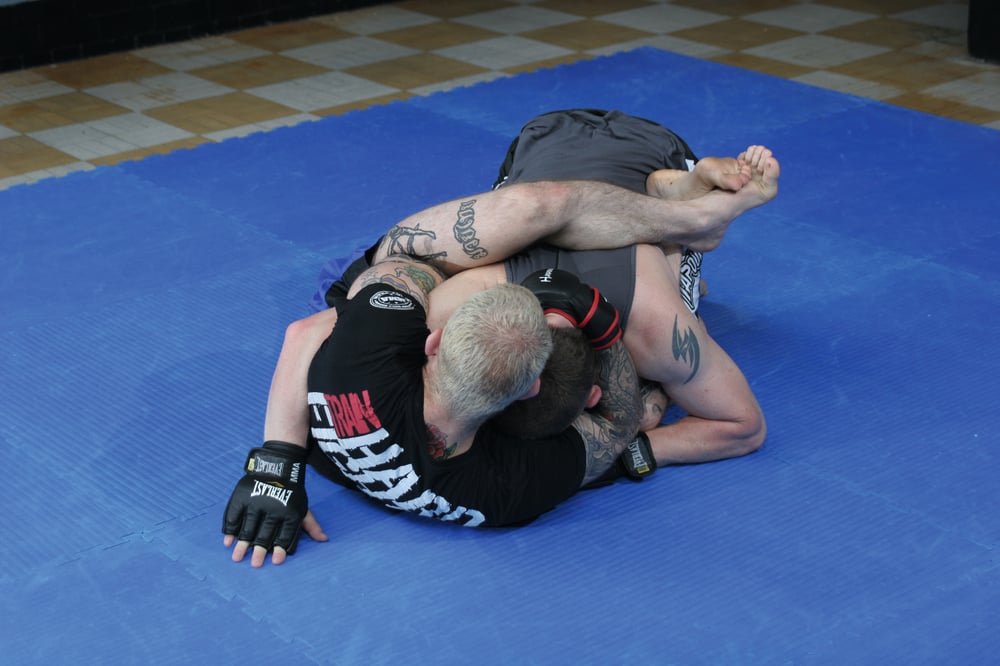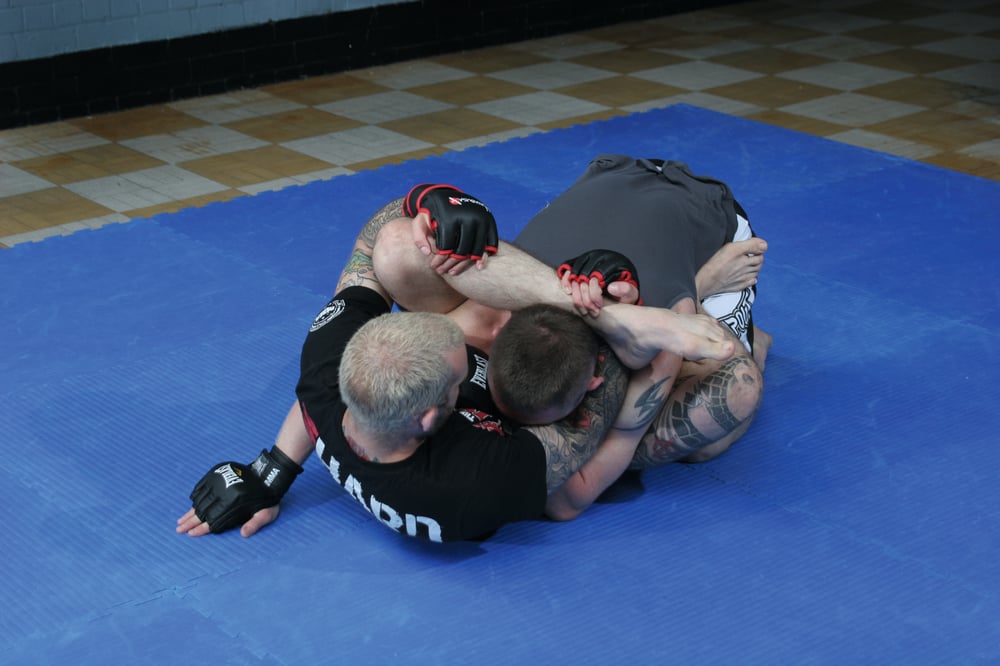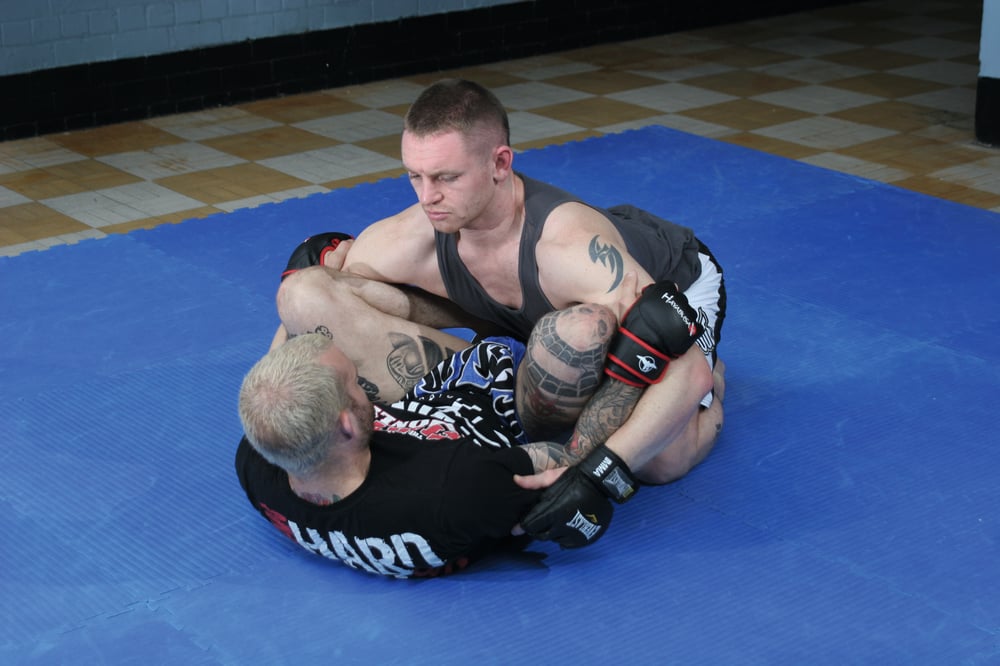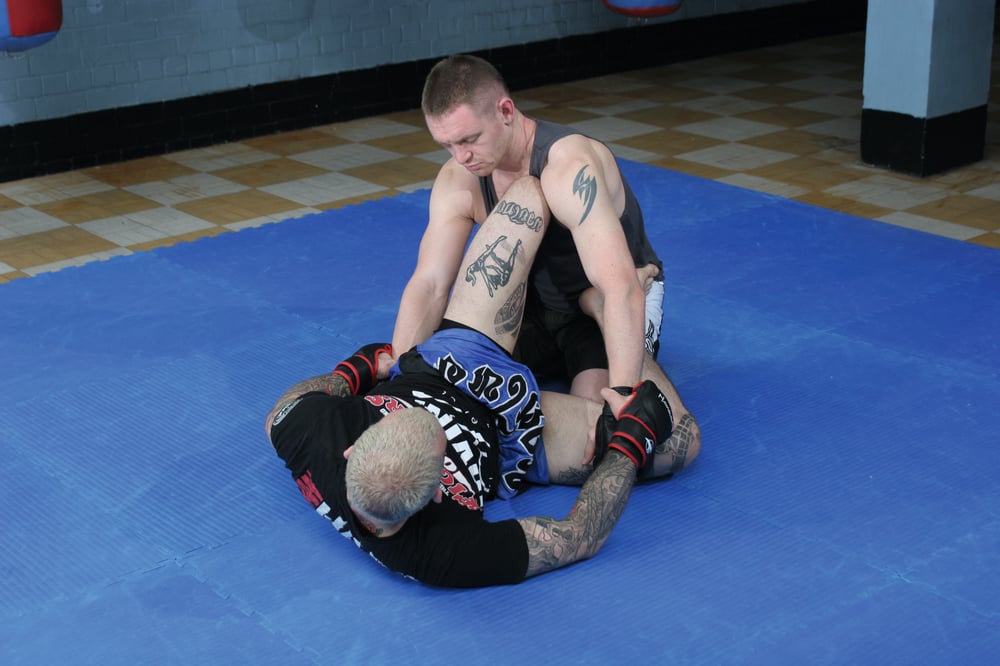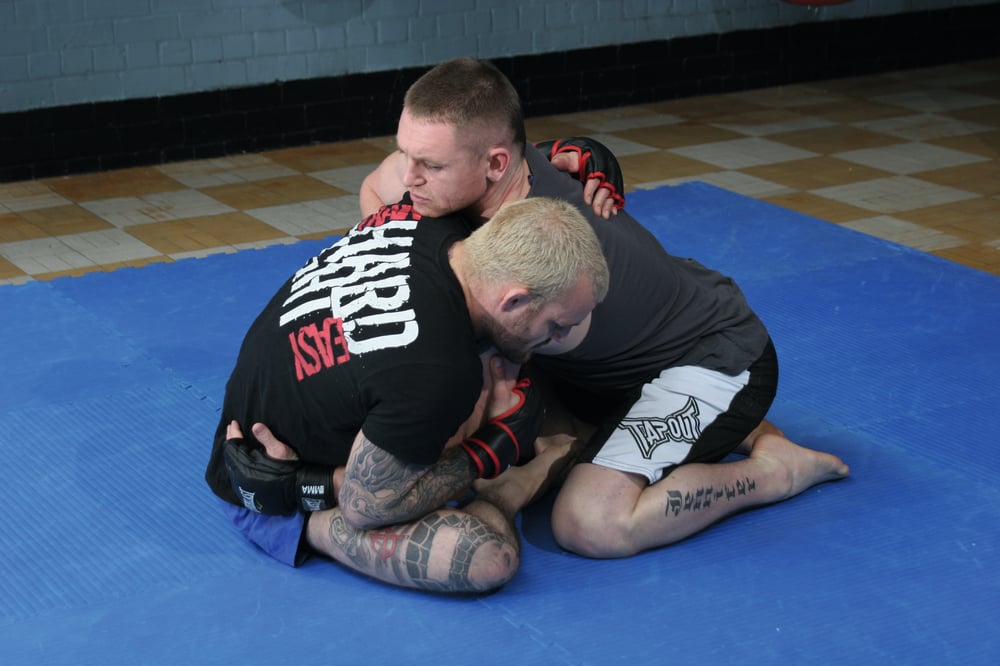
Issue 058
January 2010
Modern MMA judging generally favors the man in top position, so in order to show that you are winning the fight from on your back you must demonstrate extremely efficient control of your opponent. To avoid excessive punishment from the man in your guard you must familiarize yourself with a variety of strategies and the according tie-ups. Knowing how and when to employ the different types of guard is critical, as is the ability to change from one guard to another as the fight develops.
THE CLOSED GUARD
1. Basic closed guard
Without any control over the upper body, Pete [blue shorts] cannot be effective from this position. Rob has good posture (his upper body is upright) and a solid base (he is sat low on his heels and is evenly balanced). The closed guard prevents Rob from passing the guard or moving away, but that is all. Pete must wait for the correct moment to establish a good tie-up with Rob. Pete cannot allow Rob to free his upper body. Without any kind of tie-up Rob can strike down at will.
2. High guard
Pete has both legs locked high around Rob’s upper body. He controls both of Rob’s arms with one arm and uses the other hand on the head to control posture. By limiting the movement of Rob’s shoulders and arms, Pete diminishes Rob’s punching power and takes the elbows out of play. His primary submission option from here is the armbar. This is a good position from which to initiate rubber guard.
3. Overhook and collar tie
Pete has an overhook on one arm and has head control on the other side. Pete slides his hips out toward the overhook. If he remains on both shoulders Rob will easily stack him. By moving to the side Pete establishes superior head position and can attack with his overhook. Pete’s primary submission options from here are the kimura and the omoplata on the trapped arm. This is another good position from which he can initiate the rubber guard.
4. Rubber guard
Rubber Guard is a very effective way of controling your opponent’s arms and posture and setting up submission attacks. Note that Pete is hugging his knee and is holding his shin with his palm facing toward himself, not reaching over or pulling down on his foot.
THE OPEN GUARD
When Pete’s knees are in front of Rob’s elbows this constitutes an open guard. Pete’s options for submissions, strikes and sweeps have now all changed, and Rob’s options for passing and striking have changed accordingly.
1. Feet on hips and bicep control
Pete’s feet are on Rob’s hips. He holds over the arm on both sides, effectively neutralizing Rob’s ability to strike. From here it is difficult for Rob to try and stack into Pete. This is a strong position for Pete to set up submissions and sweeps, but should Rob break free Pete is in a difficult position to establish a new type of guard.
2. Center jam with wrist control
Even though he holds the wrists, Pete has little control over Rob’s posture. He has one foot on the hip and blocks Rob’s body with his knee in the center of the chest. Pete has no options here to set up submissions, he can only limit Rob’s ability to stack, pass and strike. This position is used essentially to buy time, to escape back or to establish a new control position.
THE SITTING GUARD
Should Pete lose control over Rob while playing open guard, Pete can move to sitting guard. Pete is using an over-under tie-up. The key to an effective sitting guard is to maintain the chest in front of the butt. If you are leaning back the opponent will force you to your shoulders, taking away power from the sweep and enabling the pass.




